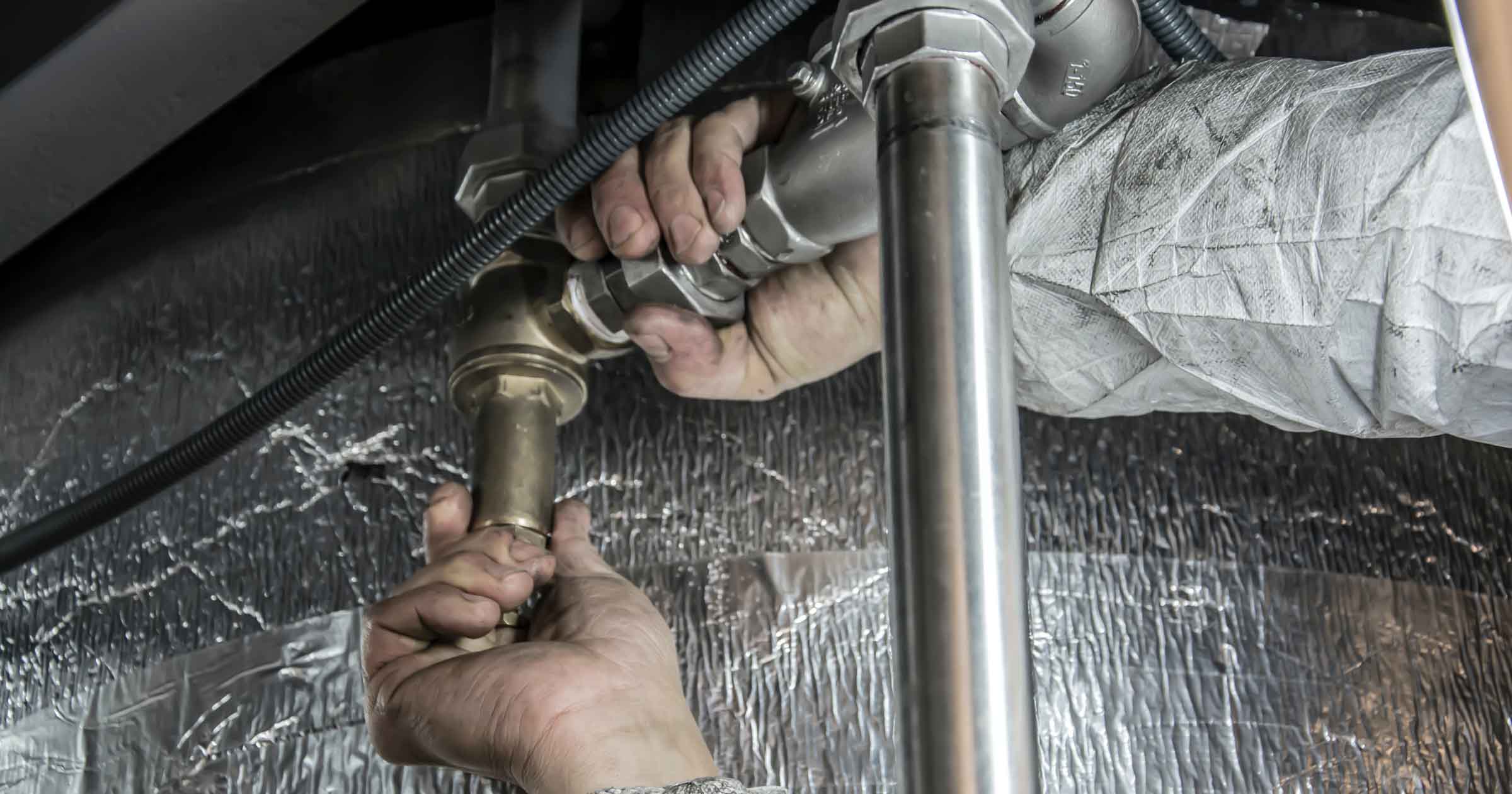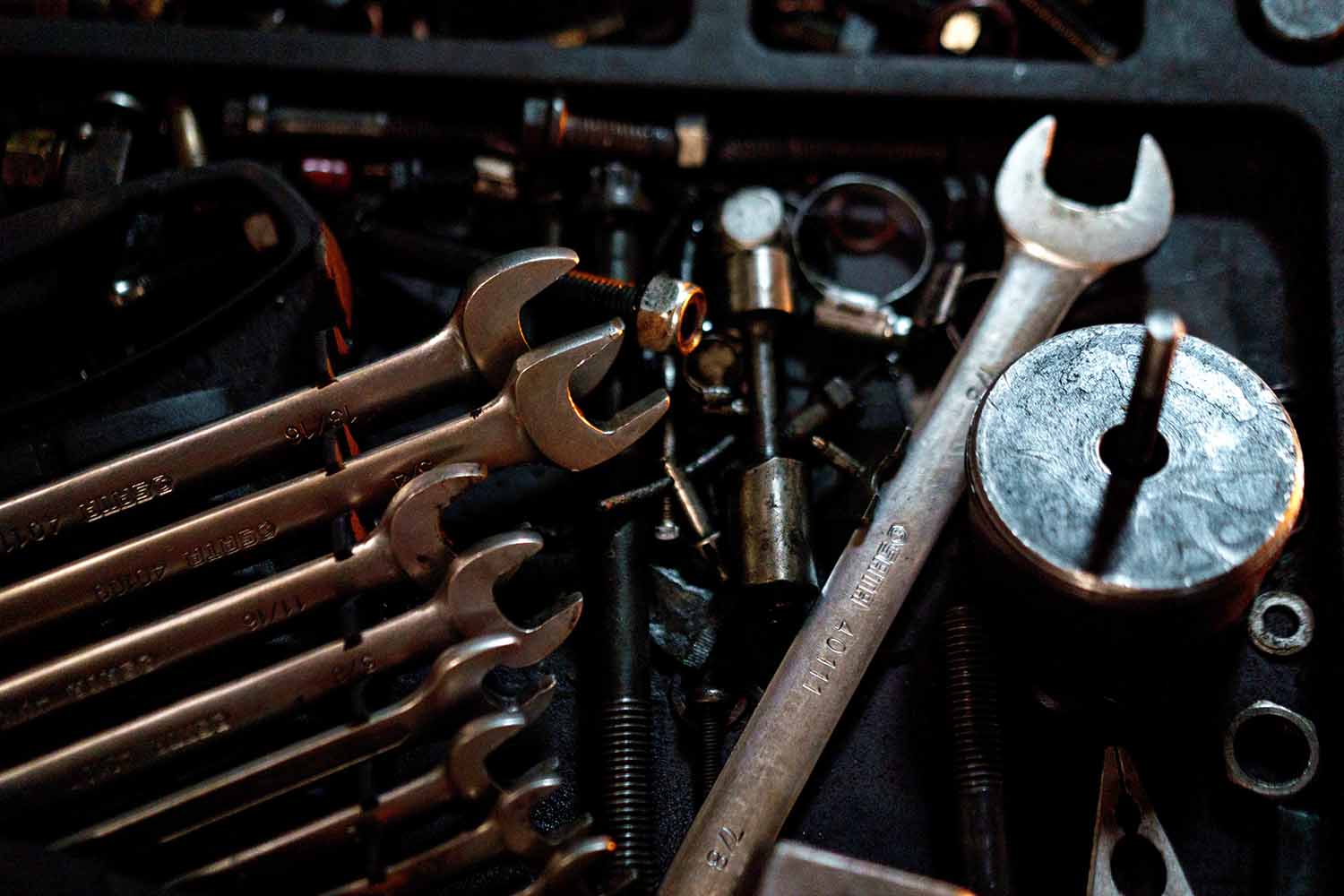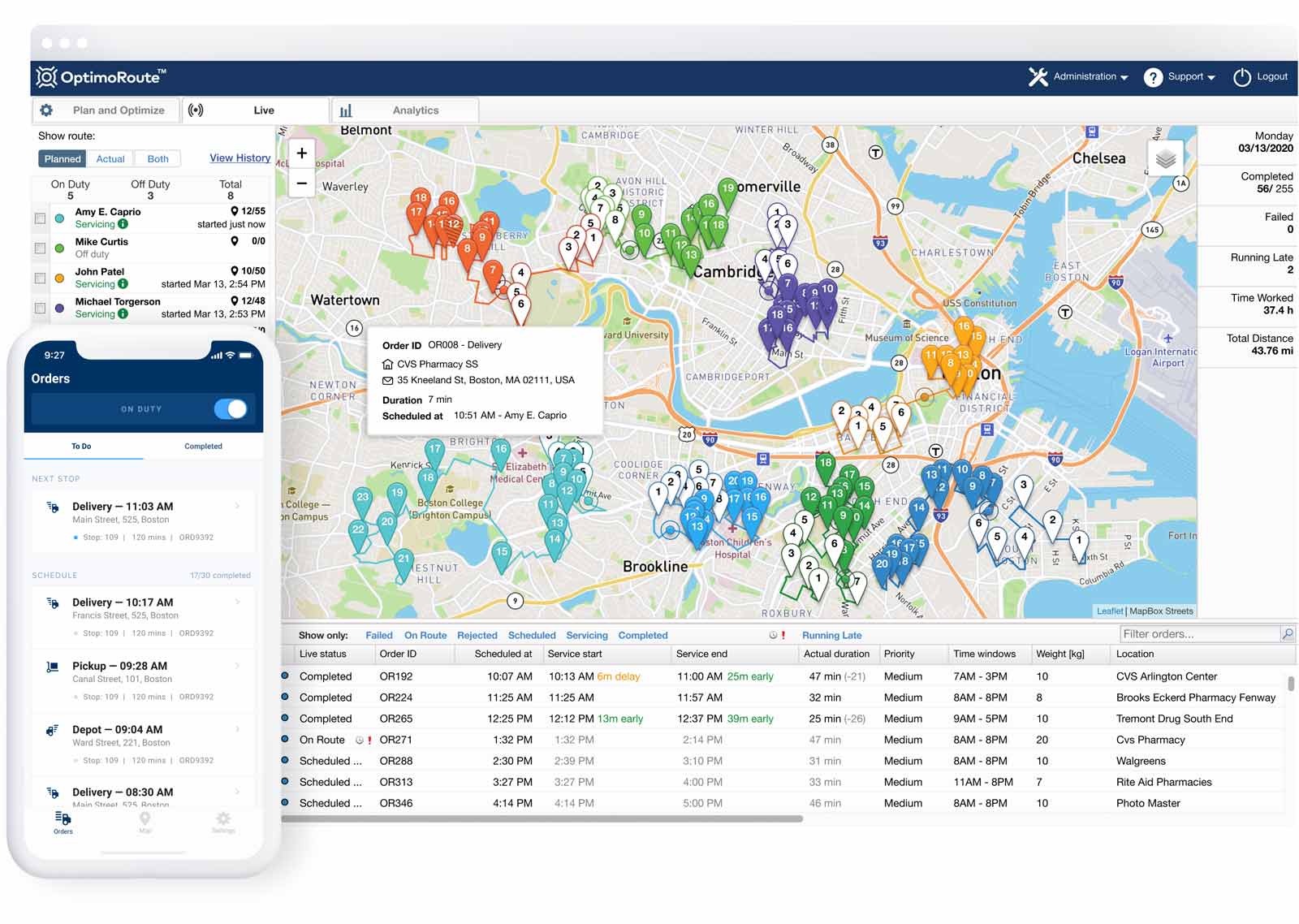How to Start a Plumbing Business in 2024: A Complete Guide

Demand for local plumbers skyrocketed in 2020, with Google searches related to the topic hitting “their highest levels in five years.” Increased demand and room for growth within the industry make now an excellent time to start a plumbing business.
Starting a successful plumbing business begins with becoming a plumber, acquiring the right plumbing tools, and continues into the future with growing your skills and customer base. For your business to prosper, you’ll need to develop the skills to become a top-notch plumber. Then you will build a business plan that focuses on maximizing profits and improving your customers’ experience. You will also need tools to help you work efficiently, such as a route planner that helps you get from one job site to another.
Jump to the section that interests you most:
- Become a Plumber
- Purchase Your Plumbing Equipment
- Develop a Pricing Structure and Service Agreement
- Build a Plumbing Business Plan
- Register Your Plumbing Company
- Plan For Success With OptimoRoute
- Create a Loyal Customer Base
- Grow Your Team and Continue to Develop Skills
- Improve Your Plumbing Business With OptimoRoute
Become a Plumber
The first step in starting a plumbing business is learning the basics and becoming a plumber. To do this, you’ll need to complete an apprenticeship, obtain a license, and specialize.
Complete an apprenticeship
To become a plumber, you’ll need solid problem-solving skills, technical knowledge of your tools, and strong communication. But those skills aren’t enough. To become a certified plumber, you’ll also need to complete an apprenticeship, which often lasts four to five years. An apprenticeship offers hands-on experience that plumbers need to do their job, as well as technical courses on industry topics like safety and piping systems.
If you aren’t prepared for the hands-on work of an apprenticeship, you may opt to attend a plumbing school for general education. But attending a trade school won’t replace an apprenticeship—you’ll still need to complete one after you finish your courses. While post-secondary education is not required to become a plumber, trade schools offer the training some aspiring plumbers may need to be ready for the demands of an apprenticeship. Some schools also help students to find an apprenticeship to further develop skills through hands-on experience.
After completing an apprenticeship, you may become a “journeyman plumber.” A step above an apprentice, a journeyman can work independently and even begin training new apprentices in hopes of one day becoming a master plumber, which is the highest designation of expertise within the industry.
Get a plumbing license
Currently, plumbers need a license in order to work in all but six states. Obtaining a license will allow you to work either for a plumbing company or independently as a plumbing contractor. The requirements for obtaining a plumbing license vary from state to state, and some are easier to obtain than others. For example, California requires plumbers to have four years of experience working as a journeyman, pass a plumber exam, and have a minimum of $2,500 to get the business up and running. Meanwhile, in Oklahoma, journeyman plumbers can apply for a license after just three years of working as an apprentice. Be sure to research the specific requirements in your region by doing a quick internet search or consulting with a master plumber who might be able to give you advice on getting a license.
Find your specialty
After completing an apprenticeship, many plumbers choose to specialize to narrow the scope of their work and develop the level of expertise necessary to become a master plumber. The most common and in-demand specialties include:
- Sprinkler Fitter: This specialty focuses entirely on sprinkler systems within buildings that are designed for fire response. Sprinkler fitters install, maintain, and repair these sprinklers, and they often also work to educate their customers on the importance of proper sprinkler maintenance for fire prevention.
- Pipefitter: This type of plumber typically works in an industrial setting. They are often responsible for designing, testing, and installing pipe systems that are used for heating and cooling buildings.
- Construction Plumber: The primary focus of plumbers in construction is installing, maintaining, and repairing pipes and fixtures within buildings. They are often hired by construction companies during the process of building a new structure or may be employed by residential buildings such as apartments for general maintenance and repairs.
- Public/General Plumber: A public or general plumber often responds to house calls for any basic plumbing need. They are the typical plumber you may think of when you encounter a blocked drain in your home.
Purchase Your Plumbing Equipment

Some schools and apprenticeships may provide you with the tools you need, but you may not get to keep them after your apprenticeship ends. Even if you can keep them, they might not be all of the tools you need to start your own plumbing business. You’ll need the basic equipment for plumbing jobs, such as wrenches, pipes, pipe expanders, and safety equipment such as eye goggles.
To start a successful plumbing business, you’ll also need to consider what tools you’ll need for long-term success. This includes things like a domain name for a website, office space, and vehicles to drive from job site to job site. You’ll also want to look at software that can help keep your operations running smoothly, such as a route planning solution that can help you get to job sites and cut down on fuel costs or an HR system to manage your team of plumbers.
Develop a Pricing Structure and Service Agreement
Before you get hired by your first customer, it’s important to be prepared to answer their questions about pricing and have a service agreement in your back pocket, so jobs aren’t delayed by payment issues.
Price your plumbing services
There are two standard methods for pricing in the plumbing industry: hourly and per job. Charging an hourly rate is the most common pricing structure in the industry. To implement this in your business, you’ll need to calculate your own hourly rate, which you can do by dividing your desired salary by the number of hours you plan to work in a year. To calculate that, start by deciding what you want your yearly salary to be. Do some research to determine what a reasonable one would be by talking to some other plumbers or searching online. Then look at your expected costs for things like liability insurance, materials, and anything else included in your business overhead. Add those to your yearly salary, then divide the total by the number of hours you plan to work in a year. That’s your hourly rate.
If you don’t like the hourly rate model, you may choose to charge a flat rate for each job. To implement this pricing model, begin by creating a list of all of the services you offer. Evaluate each service on the list individually to assess your overhead and how much you should charge to make a profit. Consider things like how much time it takes to complete the service, the level of difficulty, and any materials you’ll need.
Create a service agreement template
Service agreements are a type of contract that outlines the details of the plumbing job, including what the job entails, how long it should take, and the price of the job. They are designed to protect both you and your customer, ensuring that both parties have a clear understanding of the service expectations. They include basic information such as your name, the customer’s name, details about the job, specific information on how payments should be completed, general liabilities for each party, and warranties or insurance for the job if necessary.
Creating a service agreement template in advance will help you to streamline sales. A pre-built template also helps to guide you through creating the agreement, guaranteeing that you include all of the important information in every contract. You can hire an attorney to draft a template for you, or you can find a template online to model your own after.
Build a Plumbing Business Plan
In order to build a successful plumbing business, you need a plan for how you’ll succeed. To do this, define your business goals. From there, you can develop a plan for how to reach those goals and outline the steps you need to take to execute your plan in a realistic timeframe. For example, if a goal of your business is to generate business through customer referrals, then your business plan should include customer perks that set your business apart.
Register Your Plumbing Company
The first thing you need to do to register your company is pick a business name for it. After you’ve selected a name, you’ll need to register it as a Doing Business As (DBA), as well as register the DBA with the relevant agencies. These agencies may vary from state to state, but in most states you’ll be required to register with the local plumbing board. In many states, to register with the plumbing board, you must be a licensed plumber and also meet the requirements to register with local regulatory agencies.
Create a Loyal Customer Base
When you start your business, you’ll need to build a customer base by finding new customers and using a good marketing strategy to let them know that you’re the most equipped to tackle their plumbing needs. One of the easiest and most cost-effective ways to do this is by developing an online presence with a website and social media. Another great option is to claim a Google business listing, which will help to promote your business when potential customers search phrases like “local plumbing company.”
Once you’ve been hired, it’s time to focus on making a good impression so you can retain customers. Provide great customer service by always arriving on time to appointments and updating customers when there has been a change in plans; a route planning tool can help you do both automatically. You can also leave a business card and encourage customers to call in the future if they need a plumber again.
Plan for Success With OptimoRoute
Retaining customers is important for the success of any small business. Return customers spend 67% more than new customers and account for over 50% of the annual revenue for small businesses, according to data in a recent analysis. One way to turn new customers into returning customers is by fitting them into your schedule on short notice to prove you care about their business. And once the appointment is set, you need to show up on time.
Scheduling those appointments is difficult when your customers may be homeowners or businesses located in various areas of town. Investing in a route planning solution like OptimoRoute alleviates this headache by planning multiple routes for you automatically. If you get an urgent call for a repair and need to fit an extra appointment into the schedule, you can update the system and it will be added to your workday. You can do this even while you’re at a job site, after all, OptimoRoute is a cloud based service that can be accessed remotely from anywhere and no installation is required. OptimoRoute will automatically replan your routes for the day and provide you with a Live ETA for your field crews.

You need to be able to go from one job to the next as efficiently as possible in order to arrive at the scheduled customer appointment on time, which will help improve the customer experience and cut down on fuel costs. Route optimization is the best option for doing this, and OptimoRoute can streamline this process with features like automated planning and real-time route modification.
Grow Your Team and Continue to Develop Skills
The plumbing industry is expected to grow by 5% in the next decade, according to the U.S. Bureau of Labor Statistics. To stay competitive within a growing industry, it’s important to keep your skills sharp by staying informed about changes in the industry and keeping up to date with the latest technology in the field. Continuing your training won’t be vital in the first year that you start your business. However, it is important for the long-term success of your business.
Mark a date on your calendar shortly after the first anniversary of your business opening to remind yourself about skills development for yourself and your employees. You may still be up to date, but once you start to fall behind, it can be difficult to catch up, so it’s important that you don’t forget this step. Consider subscribing to industry magazines such as Plumbing & Mechanical Magazine and attending any industry conferences or events that take place in your area.
As you build your customer base, you may also choose to expand your team of plumbers to keep up with demand. You can grow your team by posting open positions on job boards and considering qualified plumbers who apply. Another strategy is to accept apprentices that you can train who may eventually choose to work for you as journeymen. Educating future plumbers is an effective strategy for businesses like J-Berd Mechanical, a company in Sauk Rapids, Minnesota that partnered with “a local high school to find that next generation of plumbers.”
Improve Your Plumbing Business With OptimoRoute
Whether you plan to keep your business small or you’re looking to grow, OptimoRoute can help improve your operations and save money. Try out OptimoRoute today with a 30-day free trial!
Try OptimoRoute™ for Free
No installation or credit card required


